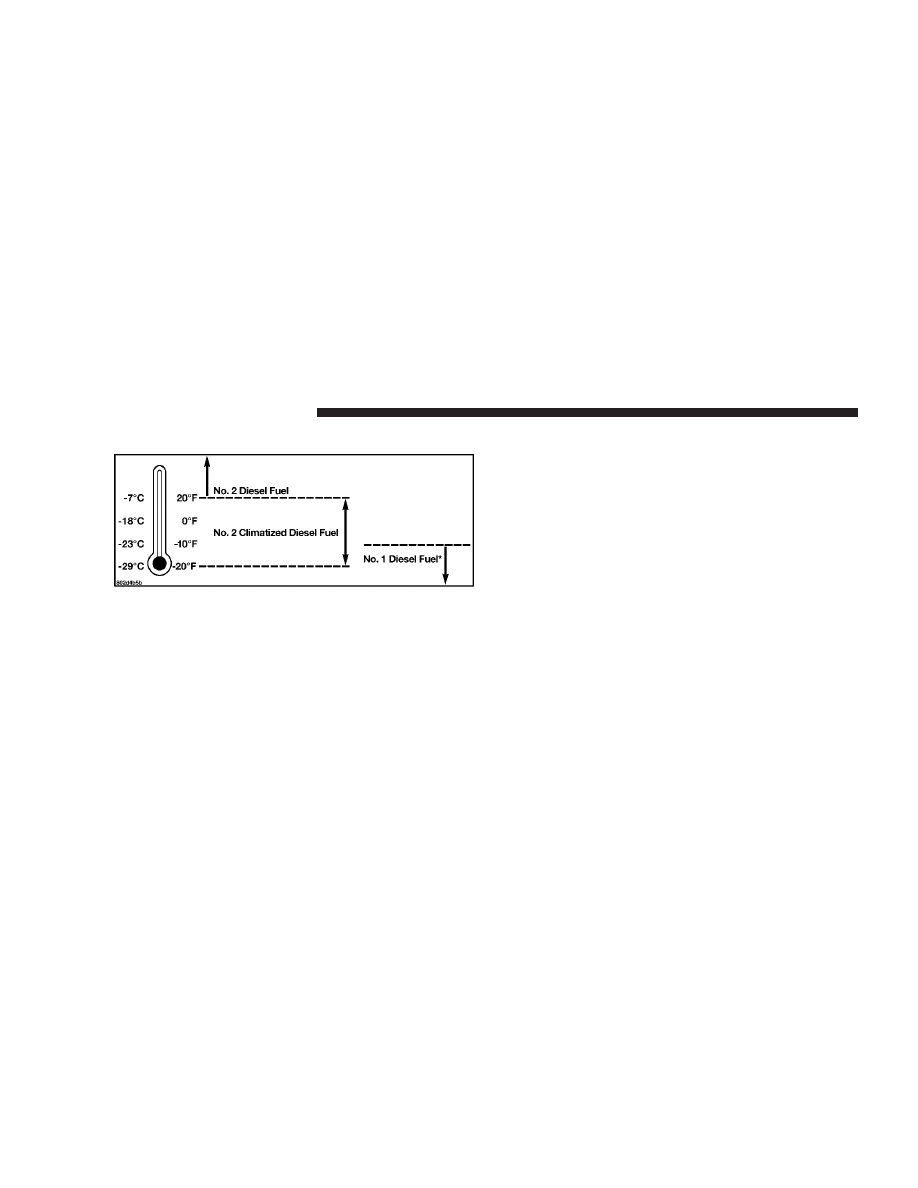Dodge Diesel (2004 year). Manual - part 14

Fuel Operating Range
*No. 1 diesel fuel should only be used where extended
arctic conditions (-10°F/-23°C) exist.
NOTE:
• Use of Climatized Diesel Fuel or Number 1 Diesel Fuel
results in a noticeable decrease in fuel economy.
• Climatized Diesel Fuel is a blend of Number 2 and
Number 1 Diesel Fuels which reduces the temperature
at which wax crystals form in fuel.
NOTE:
Refer to Fuel Requirements in this section for
further details on fuel recommendations.
Engine Block Heater
The engine block heater warms engine coolant and
permits quicker starts in cold weather. Connect the heater
cord to a ground–fault interrupter protected 110–115 volt
AC electrical outlet with a grounded, three-wire exten-
sion cord.
The engine block heater cord is routed under the hood to
the right side and can be located just behind the grille
near the headlamp.
NOTE:
The engine block heater cord is a factory in-
stalled option. If your vehicle is not equipped, heater
cords are available from your authorized Mopar
t dealer.
The block heater must be plugged in at least one hour to
have an adequate warming effect on the coolant.
212
STARTING AND OPERATING